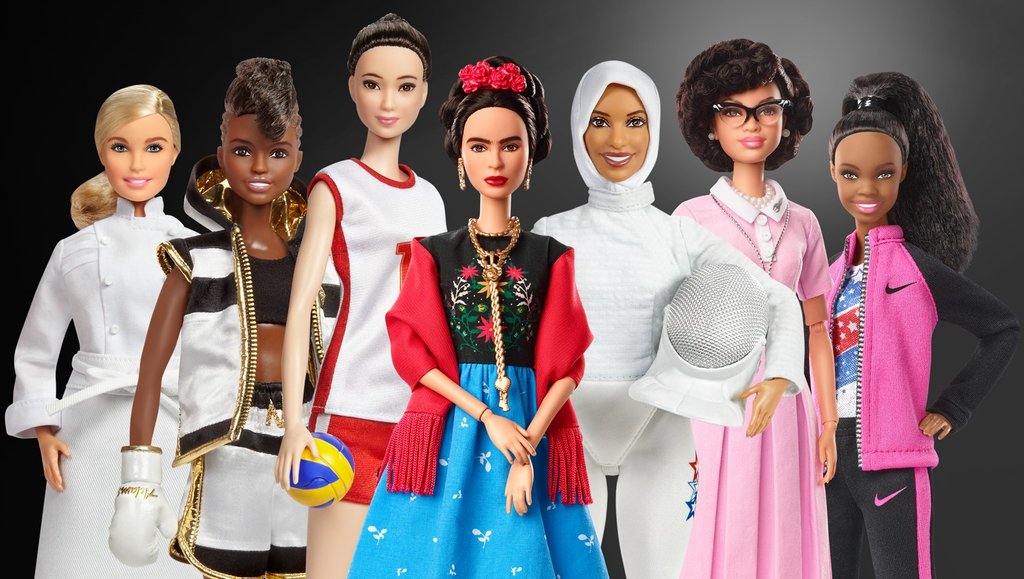Angelica Babiera | Arts Editor
Featured image: Barbie’s version of Frida Kahlo does not have her iconic unibrow and wheelchair. | Courtesy of Popsugar.com
On International Women’s Day, Mattel, the toy manufacturing company that creates Barbie dolls, launched a line of dolls based on historical and iconic women. The dolls included Amelia Earhart, Katherine Johnson, and Frida Kahlo. However, relatives of Kahlo say that the company is not authorized to create the doll.
According to Vanity Fair, Kahlo’s great-niece, Mara de Anda Romeo, claimed Mattel does not have the rights to use Kahlo’s image. She and many others have complained about the doll’s appearance, claiming the Barbie does not accurately depict Kahlo’s long, dark unibrow.
The feud between Kahlo’s family and Mattel goes beyond the authorization of using Kahlo’s image, but focuses on how the company inaccurately depicted the artist. Many on Twitter took to heart that the Barbie does not show Kahlo’s iconic unibrow and her wheelchair, claiming it steals the truth and twists it in order to make sales; a beautification of Kahlo in order to conform to social standards.
Sarah Cacella, a third-year English and Professional Writing undergraduate, says: “If you’re going to make a Barbie of her, then make it right. They have a duty to portray people accurately, so that they can be remembered accurately.”
Mattel is not the only company who has tried to downgrade a myriad of women into looking a certain way. Companies like Clairol, Dove, and Nivea also promote beautification. They advertise skin lightening, hair removal, or hair dyeing products to show women whose skin is not “fair enough” or hair is not “black enough.”
Many companies still find a way to use these advertising components as a means of making sales, because they know several cultures uphold extreme beauty standards from history and colonization.
However, if Mattel is going to release a line of dolls based on “inspiring women,” they should at least create these dolls to much better resemble the historical figures they are supposed to.
Mattel should have included Kahlo’s wheelchair, to show people that the artist suffered from polio and spina bifida, as well as her unibrow, which represented her desire to resist the norm.
John Mercado, a fourth-year Marketing undergraduate, says: “The way I see it is, Mattel has been doing this for years with their Barbie line. Even though they claim to represent every kind of woman, they often cop out by adjusting their dolls to find their idea of beauty and how a woman should look.
“For example, looking perfect in the sense that they’re slim, blonde, and fair-skinned with blue eyes. I find that this kind of representation will definitely affect young girls negatively, especially those kids who grow up with dolls that look nothing like them.
There is a growing shift amongst consumers, and their needs have demanded that companies like Mattel and products like Barbie accurately represent women of all shapes, sizes, and colours—imperfections and all.
“Frida Kahlo was the epitome of feminism and being unique. It’s a shame that after all these years, Barbie still has these preconceived notions of ‘beauty’ and cannot change with the times,” adds Mercado.
Much like Mattel’s inaccurate and dangerous depiction of Kahlo, some companies still proceed to target a specific market, rather than including women of varying appearances and cultures. Joanne Rondilla, the author of Is Lighter Better?: Skin-Tone Discrimination Among Asian Americans and a professor at Sonoma State University, explained to Buzzfeed: “When cosmetics companies visualize who their target market is, it’s not an Asian woman or a Filipino woman. It’s a white woman. Telling a white woman to retain her whiteness, it means something different in the U.S.”
The beautification of a product in order to conform to certain standards of beauty affect the way women view themselves. They often have a need to conform to these standards, no matter how dangerous and unnecessary it may become.
Mattel’s notion of a line of dolls based on inspiring women is a new step towards change—however, they still need to work on a few things, especially in how they depict these iconic women.


